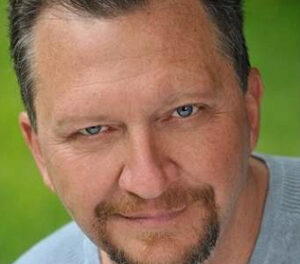Two 19th century classics and a piece from the 21st comprised the offering of the Winston-Salem Symphony under the baton of conductor Carolyn Kuan. The Saturday night concert began with Kuan introducing the opening number by American composer Laura Karpman (b. 1959).
The conductor told the large audience – the balcony was not open, so all concert attenders were on the main floor – that although one may not have heard of Karpman before, she is a multi-talented composer, having written for film, including working with Steve Spielberg. She also wrote the music for the series Lovecraft Country and Underground as well as opera, symphonic, and chamber music. “All American” was written on commission from the Los Angeles Philharmonic in 2019. The short overture incorporates patriotic songs by three American women composers: Mildred Hill (who penned “Happy Birthday”) Emily Wood Bower and Anita Owen as well as snippets of music by other Americans like John Phillips Sousa.
According to the composer, “‘All American’ is dedicated to these women. For me, this is an analogy to women’s advancement, moving forward in a positive direction, but always with a little bit of a trip, a hiccup.” Kuan then pointed out some of the unusual instruments used by the percussionists – pots and pans, trash cans, and a butcher block hit with a meat tenderizer.
The work begins with a solo French horn, unerringly played by Robert Campbell, intoning one of the patriotic songs, before the entire orchestra launches into the buoyant work, chocked full of jaunty syncopations and brilliant orchestrations. Some of the lyric string passages sounded Coplandesque, but the work was a completely individual with its energy.
Symphony No. 4 in A, Op. 90 “Italian” by Felix Mendelssohn (1809-47) was inspired by the composer’s travels to Italy in 1830-1. The four-movement work is the most popular of his five symphonies and for good reason. Packed full of energetic passages balanced by solemn and moving moments, it is a crowd-pleaser.
Kuan took the opening Allegro vivace at a robust, cheery tempo, perfectly suited to the character of the first theme. The conductor excellently paced the musical flow to effectively bring out the climaxes. In this movement and in others the listener can hear some of Mendelssohn’s trademark “elfin” sounding music found in his A Midsummer Night’s Dream, especially in his writing for the winds.
The slower second movement couples a lovely, soulful tune over a detached bass line; Kuan’s gentle gestures urged the orchestra to bring out the inherent beauty of the movement. The graceful third movement with the sections that feature the winds and brass was delightful. The whirlwind finale (more elfin character) brought the work to a brilliant close.
One is never sure how many rehearsals take place before the live concert, but there were some minor details that perhaps indicate that there should have been one more. Fast string passages and some concluding pizzicatos didn’t always seem to be in synch both here and in the concluding work, Piano Concerto No. 1 in D minor, Op. 15 by Johannes Brahms (1833-97).
It was the composer himself who first played this work, with his friend and violinist virtuoso Joseph Joachim at the podium. It was Michael Lewin at the keyboard for this concert. The pianist’s long-standing career has included performances in several international competitions, and he has been awarded several career grants and a Grammy award in 2014.
The three-movement work clocks in at over 45 minutes long and is a challenge to both soloist and orchestra. The work is packed with both drama and tenderness and myriad other moods. The opening is daemonic (think of bats out of hell) and demands incredibly intense playing from the orchestra, which the W-SS brought off brilliantly. But the gentle lyricism that follows was just as lovingly played. Kuan’s grand gestures captured these contrasts vividly. Lewin entered with the tenderness needed to contrast with what the orchestra has already been through. His technical facility and musicality were front and center. Despite a couple flubs here and there, he played with brilliant energy and power. His playing of the chorale-like passages was a delight to hear.
The first movement is interesting in that the orchestra often plays without piano, and the piano has lots of solo material, although no cadenza per se. No matter. All is somehow perfectly balanced.
The Adagio second movement is hymn-like in character and Kuan and orchestra effectively sustained the reverent mood. Lewin matched the character, and the conductor and pianist kept a close eye on each other, so ensemble was near perfect.
The final Rondo again brought Lewin’s bravura playing to the fore. His athletic playing was perfectly suited to the energy needed to bring off the main tune. Although a cadenza certainly is not required to display brilliant playing from the pianist, Brahms provides one in this movement – icing on the cake.
The coda, with more trills and forest glade woodwind passages and horn-calls brought the crowd to its feet, bringing the soloist and conductor back for several well-earned bows. This performance repeats, Sunday, November 14 at 3 pm. See our sidebar for details.











